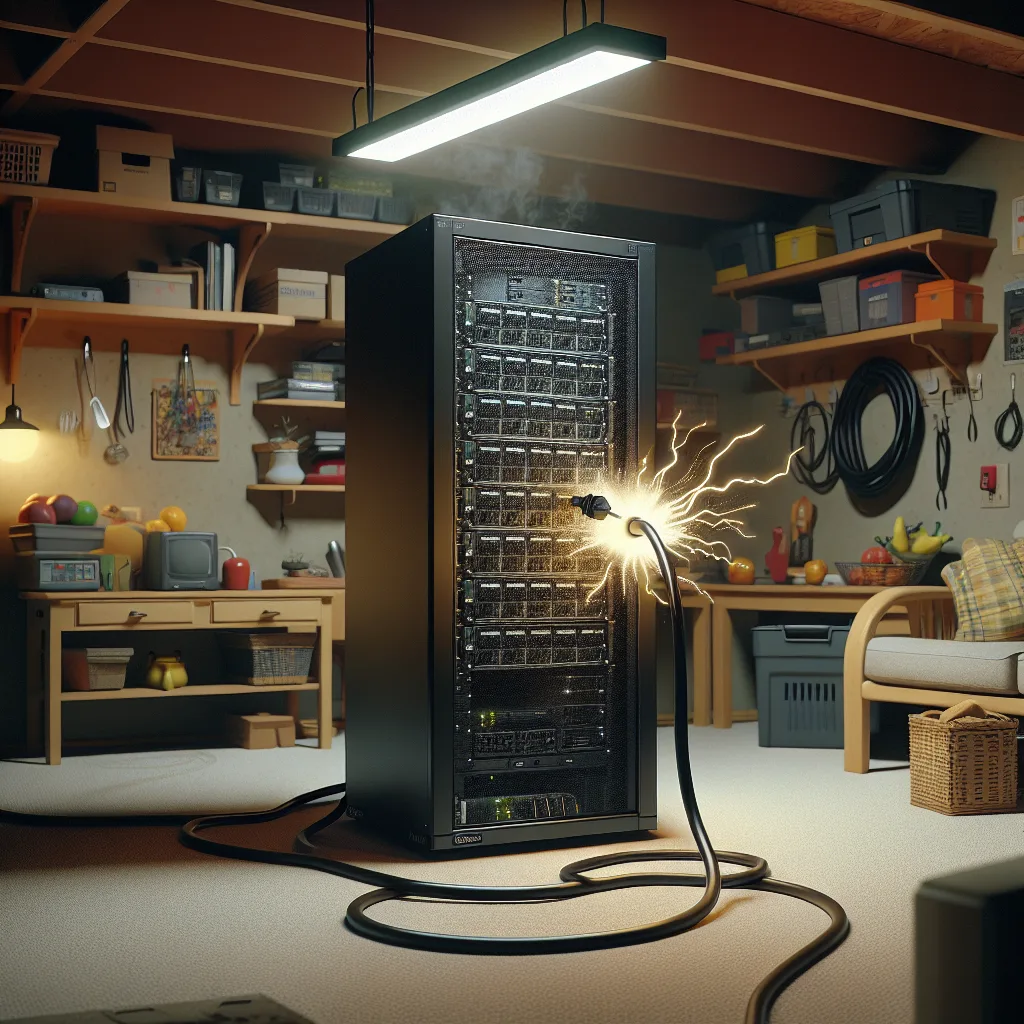Found a cheap server or enterprise hardware on Facebook Marketplace? Here’s why it might be more e-waste than treasure, and what to look out for.
You know that late-night scroll. You’re not looking for anything specific. You’re just browsing Facebook Marketplace, Zillow, or eBay, seeing what’s out there. It’s digital window shopping.
Most of the time, it’s just a blur of used couches and questionable car mods. But every once in a while, you see it. A deal. A real, head-turning, “wait, what?” kind of deal.
That happened to me the other day. I stumbled upon a listing for a full-sized server rack. The kind of thing that runs a whole office building. And it wasn’t just the rack. It was loaded with six power supply units, or PSUs. And these weren’t your average computer parts. Each one was rated for 2,700 watts.
My first thought was, “Wow, what a beast.” My second thought was a quick, back-of-the-napkin calculation.
2,700 watts x 6 = 16,200 watts.
Sixteen. Thousand. Watts.
For a moment, I let myself dream. I could run anything on this rig. It was the kind of hardware that could handle some serious computing. The price was low, and the temptation was high. It felt like finding a retired race car for the price of a used sedan. Sure, it’s not practical, but look at all that power!
But then, reality started to creep in.
The Harsh Reality of “Pro” Hardware
This is the moment where the dream of a bargain meets the reality of hidden costs. That server rack wasn’t just a piece of hardware; it was a commitment. A commitment to noise, heat, and an electric bill that would make my eyes water.
Let’s talk about that power draw again. A standard wall outlet in a U.S. home runs on a 15-amp circuit, which provides about 1,800 watts. That single server rack, running at full tilt, could demand the power of nine separate household circuits.
Plugging this thing in wouldn’t just trip a breaker. It would be a declaration of war on my home’s electrical system. And even if I had a dedicated 240v circuit, like the one for an electric dryer, the monthly cost would be staggering. Enterprise hardware is built for performance, not efficiency.
Then there’s the noise.
If you’ve never been in a server room, it’s hard to describe the sound. It’s not a gentle hum. It’s a constant, high-pitched scream of fans working tirelessly to keep everything from melting. Those six 2,700-watt PSUs would make it sound like a jet was preparing for takeoff in my basement. It’s not something you can just ignore or get used to. It’s an actively hostile sound.
And all that power and noise is really just a side effect of the main event: heat. Every single one of those 16,200 watts is eventually converted into heat. Running this rack would turn any normal room into a sauna in minutes. You don’t just need the rack; you need a dedicated cooling system to keep the rack—and the room it’s in—from overheating.
So, Is It a Gem or Just E-Waste?
This is the question, isn’t it? When does a piece of powerful, second-hand tech stop being a diamond in the rough and start being a piece of junk you’re paying to haul away?
For 99% of people, this server rack is a trap. It’s a classic example of something that’s cheap to acquire but expensive to own. The “deal” isn’t in the purchase price; it’s in the operational cost.
- For the average home lab enthusiast: It’s complete overkill. You can run a fantastic Plex server, a network storage system, and a dozen other services on a modern, low-power machine that sips electricity.
- For the tinkerer: Maybe there’s some value in stripping it for parts? The rack itself is useful. But the main components, the PSUs, are the most impractical part of the whole package.
The only person who could maybe, maybe justify it is someone with a dedicated, soundproofed, and separately-wired workshop who needs to do some serious number crunching, like training AI models or some other high-performance computing task. But even then, there are probably newer, more efficient ways to do it.
So I closed the tab. I walked away. It’s fun to look at the monster truck, but you probably shouldn’t buy it to get groceries.
The real lesson here is a simple one. The next time you see an incredible deal on professional or enterprise gear, take a second. Look past the shiny specs and the low price tag. Ask yourself about the hidden costs: the power, the noise, the heat, and the sheer practicality of it. Sometimes the best deal is the one you let someone else have.
